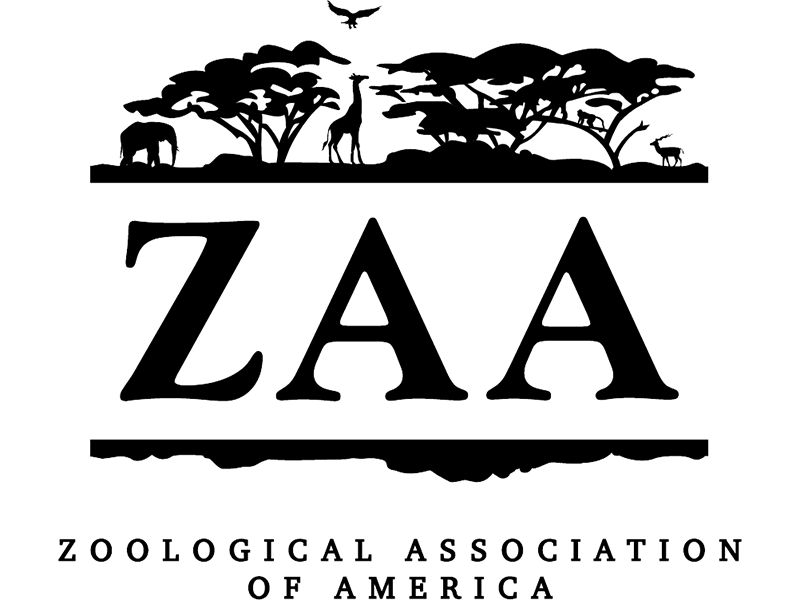The Animals
Swamp Wallaby
General Info
Common Name: Swamp Wallaby
Scientific Name: Wallabia bicolor
Physical Appearance: Swamp wallabies have long, thick, coarse fur. Their fur is dark brown with lighter fur on their chest and belly. Tail and limbs are darker in color. Cheeks have yellow-orange stripes on them. Forelimbs are much smaller than hind limbs. The wallaby uses its forelimbs to manipulate food and its hind limbs for rapid bipedal locomotion.
Length/Weight: Males are approximately 2.7 feet long, females are approximately 2.2 feet long. Males can weigh 26-45 lbs., females can weigh 22-34 lbs.
Lifespan: Approximately 9 years in the wild, 12-15 years in captivity.
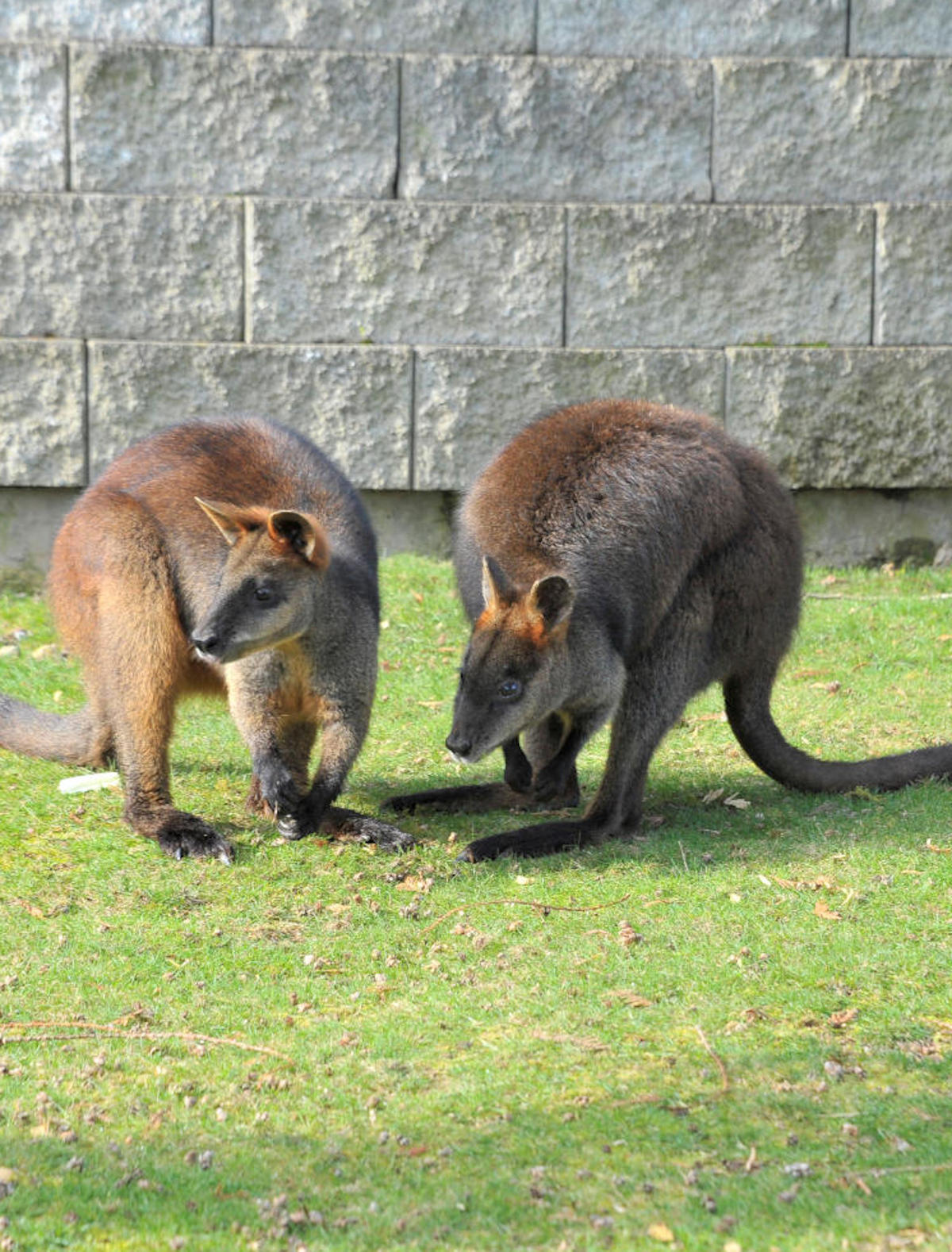
Environment
Range: Swamp wallabies have a remarkably broad latitudinal range, being found on the eastern coast of Australia from southeastern South Australia, Victoria, northern Queensland, and eastern New South Wales.
Habitat: They generally live in dense forests, thickets, mangroves, woodlands, and swampy areas. Swamp wallabies prefer to hide in thick grass and dense brush during the day and come out at dusk to forage for food.
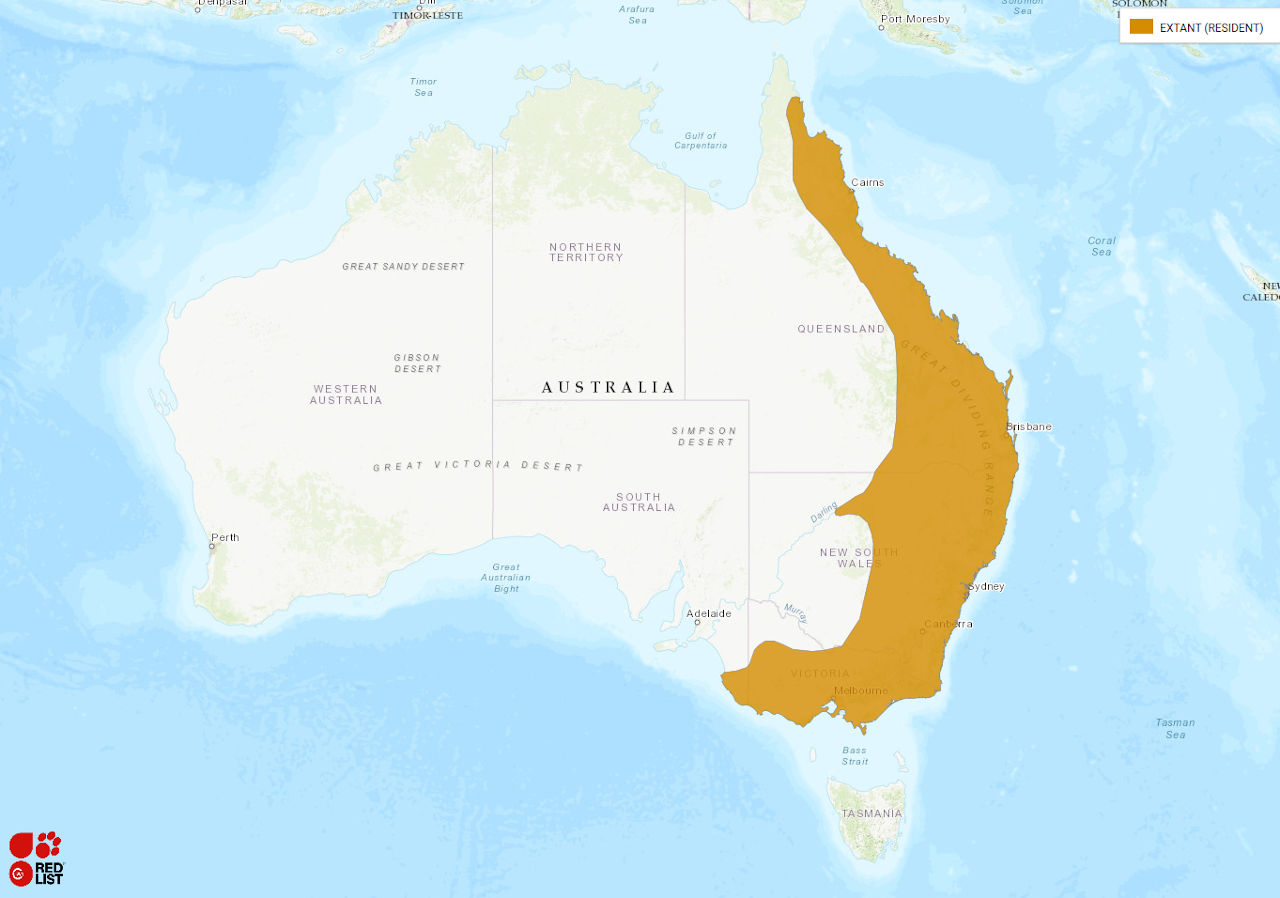
Diet
Swamp wallabies are herbivores, considered browsers more so than grazers – eating mainly branches and leaves of ferns, shrubs, and bushes. They can also eat Bracken ferns, lantana, hemlock, oleander, pine seedlings, blackberry bushes, and eucalyptus leaves.
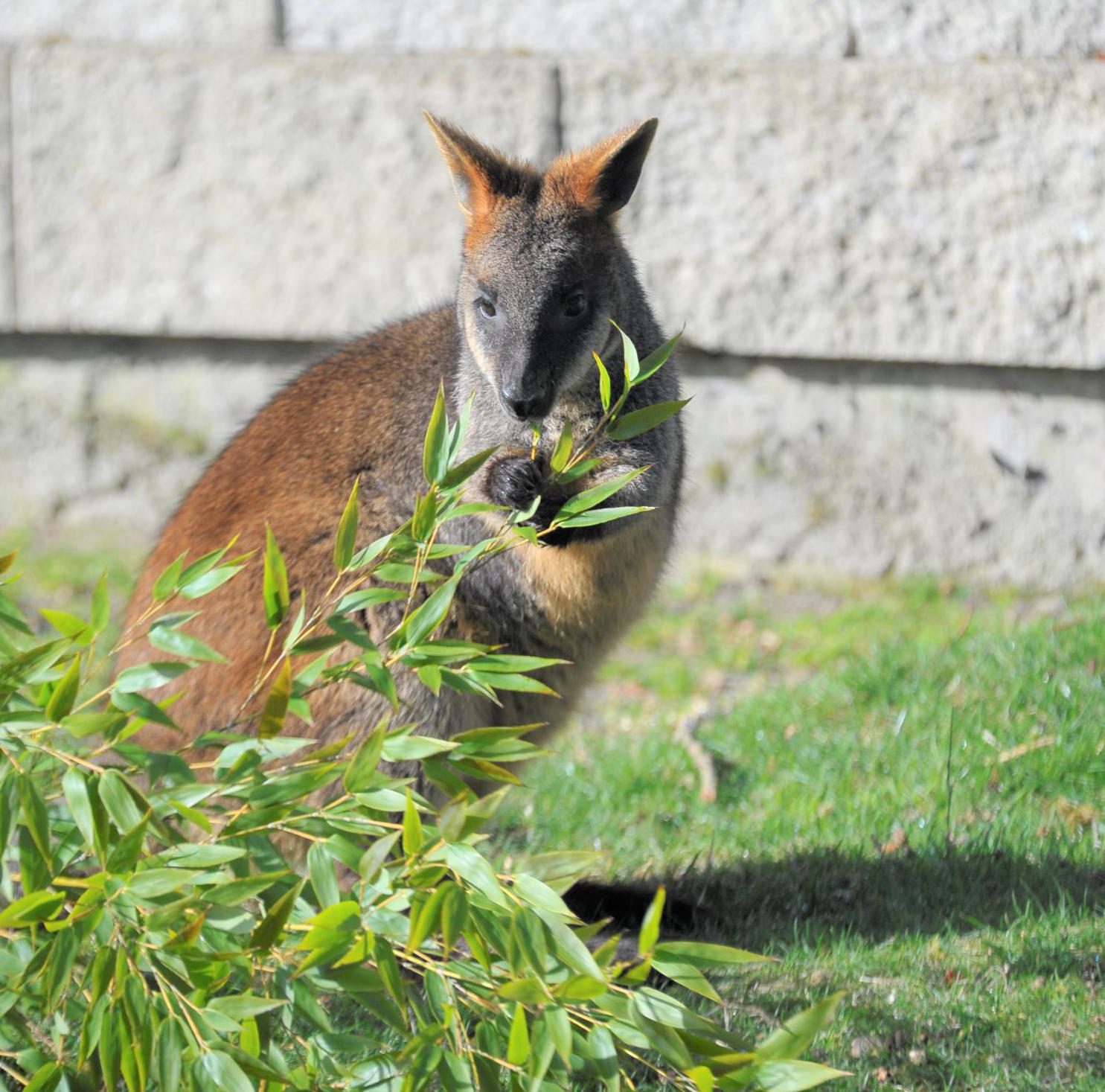
Reproduction
Both sexes reach sexual maturity at 15-18 months. Females are polyestrous (able to breed year-round). They generally give birth to one joey per cycle but twins are possible. The young joey weighs less than one gram when born and will make its way to the mammary glands located in the pouch of the female. The joey will spend 8 to 9 months in the pouch but will be completely out of the pouch at 9 months of age eating solid food. Gestation period is 33-38 days and the estrous cycle is 29-34 days long.
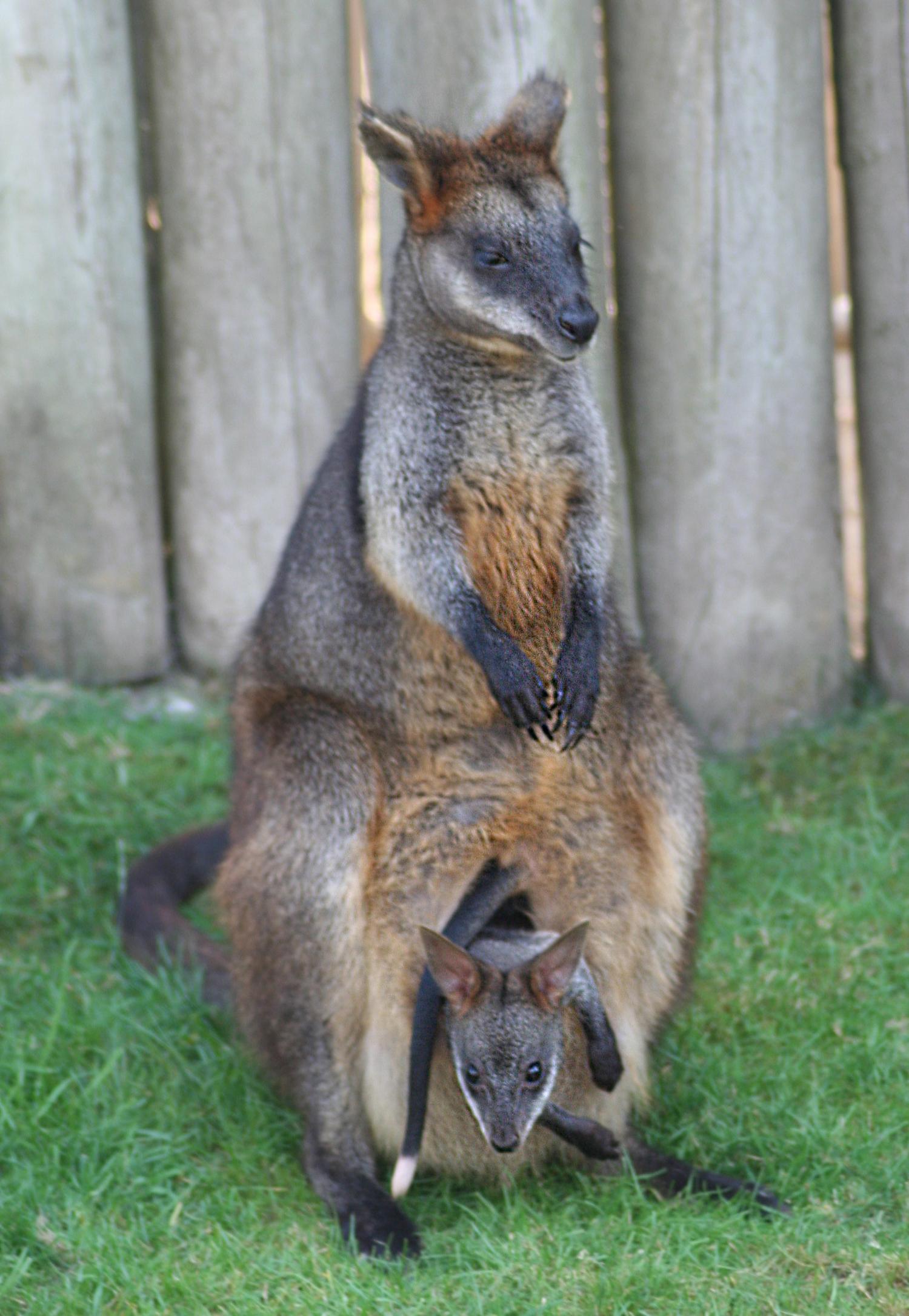
Conservation
Status:
Listed on IUCN: LEAST CONCERN
Population Trend: INCREASING
Efforts: Habitat protection in specific regions.
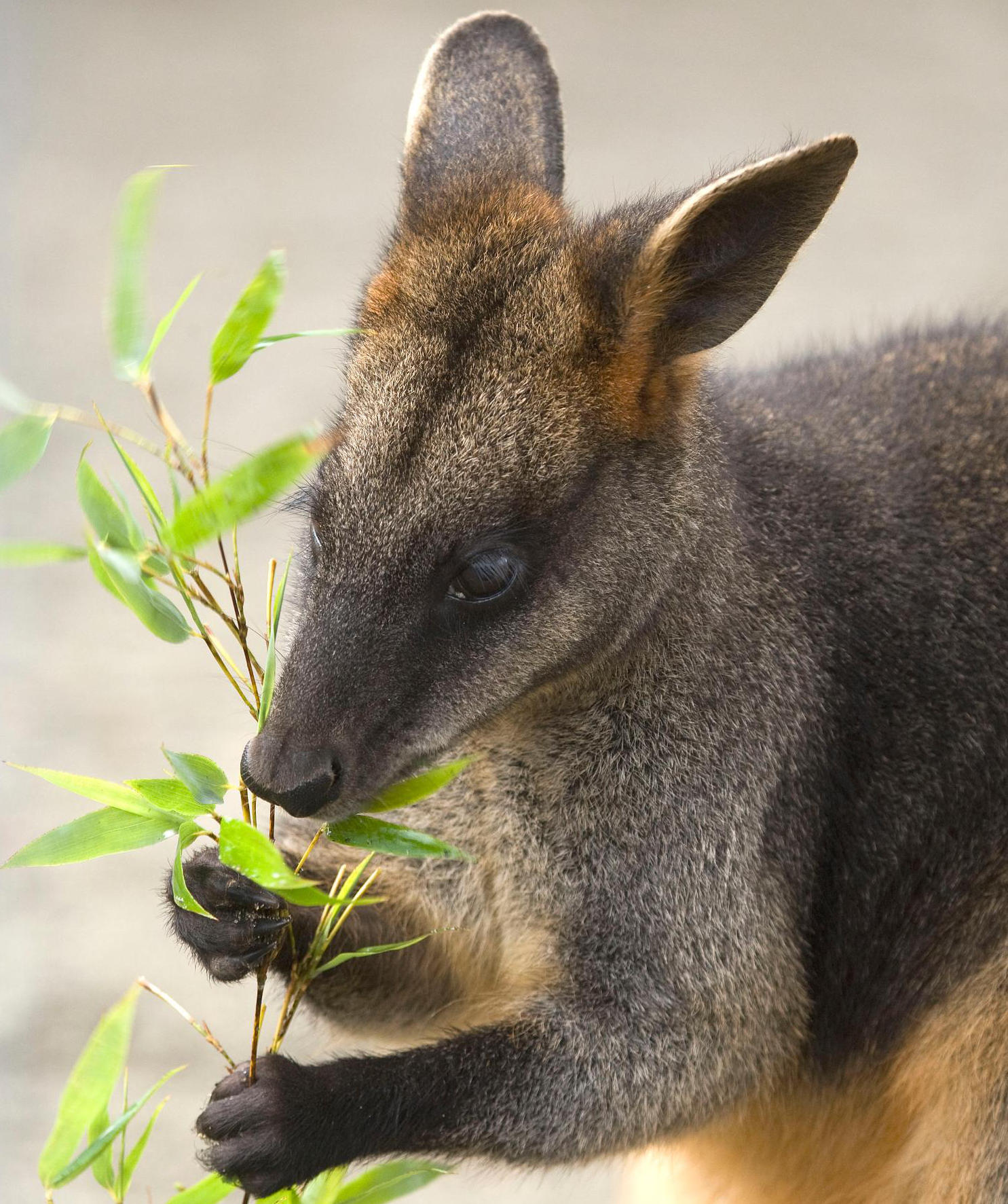
Important Facts
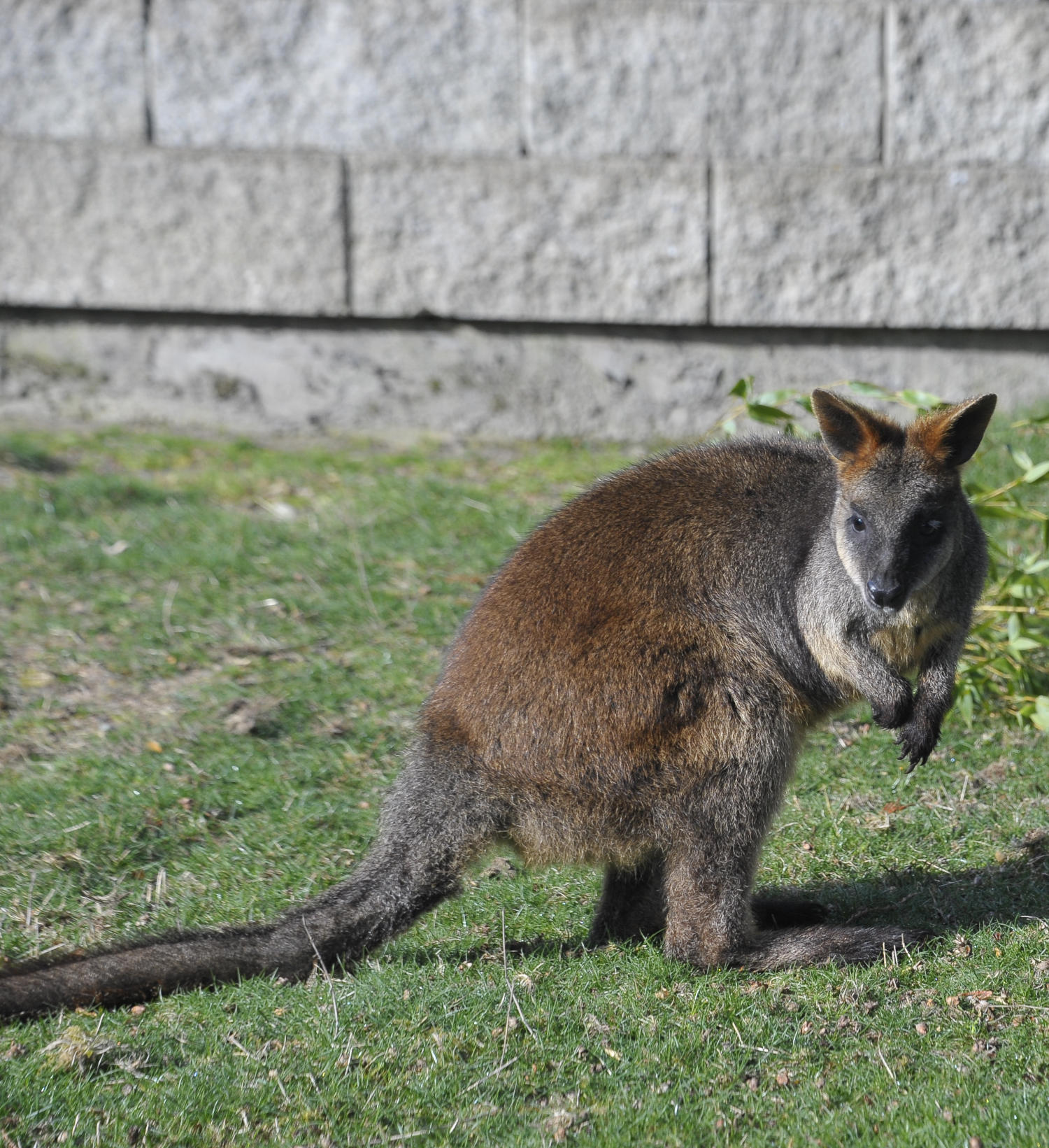
Swamp wallabies are the only living member of the genus Wallabia. This is due to the fact that they have very unique dentition, dimorphic chromosome number, and reproduction behavior.
Females are able to mate during the last few days of pregnancy, which allows continuous breeding and birthing approximately every 8 months. Suckling of the newborn temporarily halts the development of the second embryo, called embryonic diapause. The second embryo will resume development once the first joey is ready to leave the pouch. This is the only marsupial with a gestation period longer than its estrous.
One of the few species in the world that can ingest a variety of toxic plants with no negative effects.
Sources:
IUCN: RED LIST
Walker’s MARSUPIALS of the World
NSW National Parks and Wildlife Service, Australia

